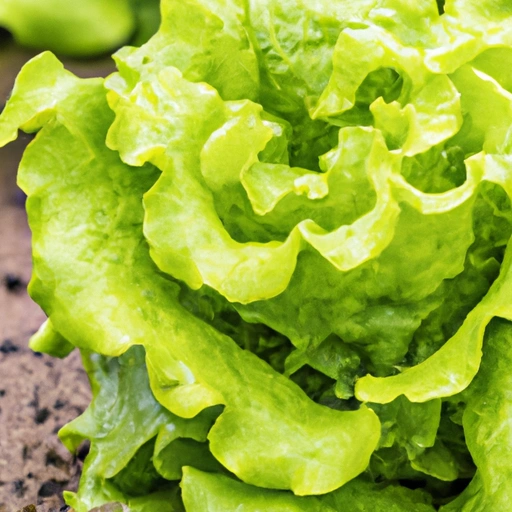Lettuce
Description

Lettuce is a leafy green vegetable known for its role in salads and as a garnish. It's a cool-season crop that thrives in spring and fall in most climates. Lettuce leaves come in a variety of shapes, sizes, and textures, from the crisp and curly leaves of Iceberg to the tender and smooth leaves of Butterhead. It is measured in heads or leaves for recipes, with one head typically weighing around 5 to 6 ounces (150 to 170 grams). In European and American recipes, measurements can also include cups and grams, depending on the preparation method.
Common uses
Lettuce is primarily used as a base for salads and as a crunchy addition to sandwiches, wraps, and burgers. It can also be found as a decorative leaf on plates, as well as a bed for various dishes that feature hot foods, such as grilled meats or fish.
Nutritional value
Calories
A cup of shredded lettuce (approximately 47 grams or 1.6 ounces) contains a mere 10 calories, making it a low-calorie addition to any meal.
Protein
Lettuce provides about 0.6 grams of protein per cup, contributing modestly to the daily protein intake.
Fat
This leafy green is virtually fat-free, with less than 0.1 grams of fat per cup.
Carbohydrates
With only about 1.9 grams of carbohydrates per cup, lettuce is an excellent choice for low-carb diets.
Vitamins
Lettuce is an excellent source of vitamin K and vitamin A, providing more than 50% of the recommended daily value for vitamin K and about 10-20% for vitamin A per cup.
Minerals
It contains minerals such as potassium, calcium, and magnesium, although in smaller amounts.
Health benefits
Eating lettuce is associated with numerous health benefits, including improved hydration due to its high water content, support for bone health thanks to vitamin K, and potential aid in vision and immune function due to the presence of vitamin A. The fiber in lettuce can also help with digestion and maintaining a healthy weight.
Potential risks
While lettuce is generally safe to eat, it can carry the risk of foodborne illnesses if not properly washed. It is also susceptible to contamination from E. coli and other pathogens, which can occur at any point from farm to table. Additionally, those taking blood thinners should monitor their vitamin K intake, as it plays a role in blood clotting.
Common recipes
Lettuce is commonly used in a variety of recipes such as Caesar salad, Greek salad, lettuce wraps, and as a topping for tacos and other Mexican dishes.
Cooking methods
While typically served raw to preserve its texture and nutritional value, lettuce can also be grilled or sautéed for a warm, wilted accompaniment to a dish.
Pairing with other ingredients
Lettuce pairs well with a multitude of ingredients, including tomatoes, cucumbers, carrots, onions, various cheeses, dressings, and vinaigrettes, as well as proteins like chicken, beef, and tofu.
Summary
Lettuce is a versatile and healthy leafy green that has been cultivated and enjoyed around the world for thousands of years. With its low calorie content and rich nutrient profile, it is a staple ingredient in various cuisines and culinary creations, offering both a refreshing crunch and a plethora of health benefits.